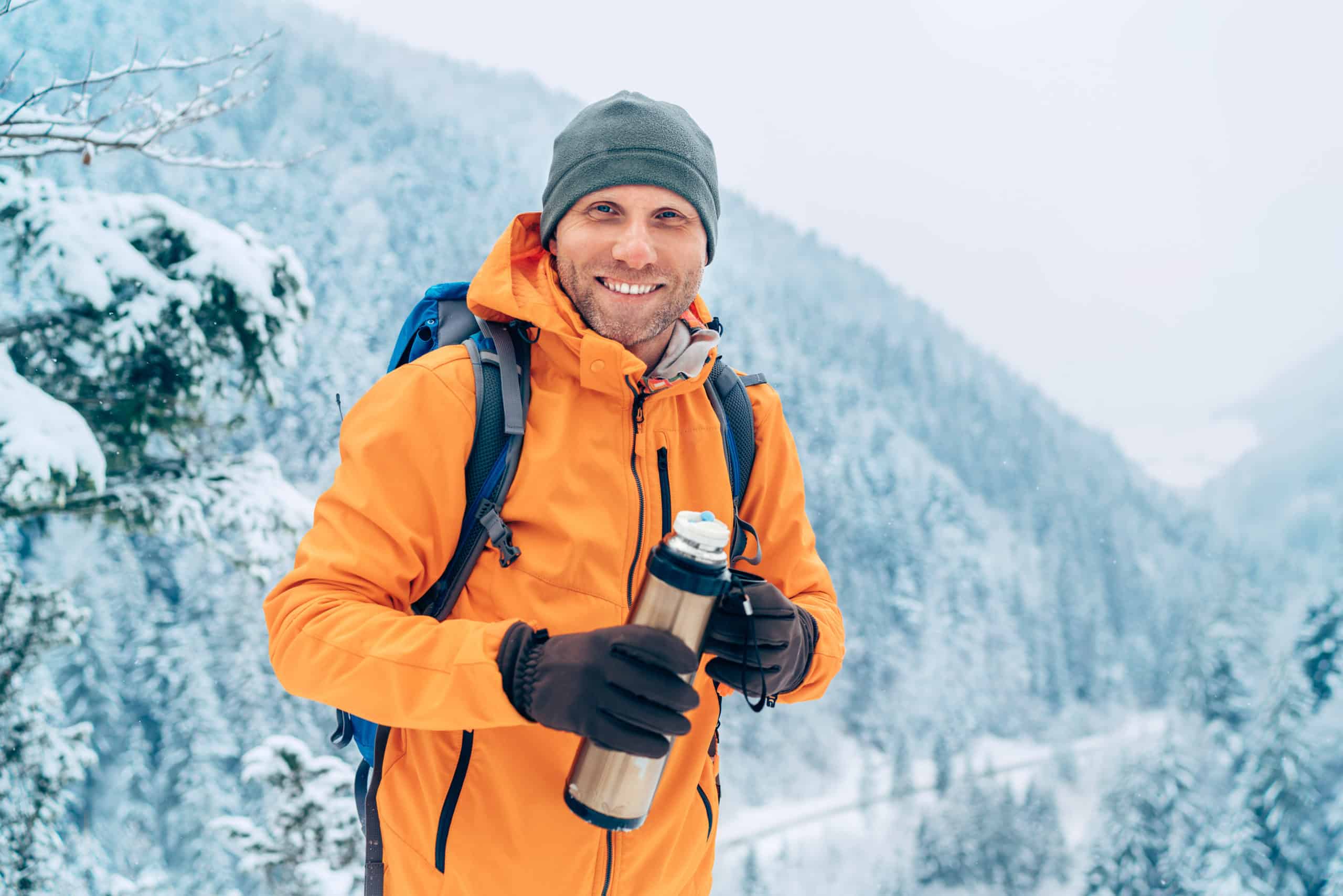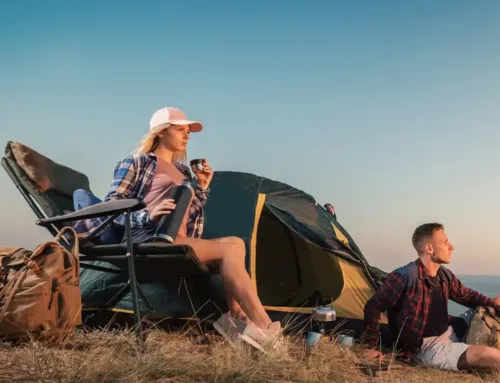When it comes to winter hiking the golden rule is to stay dry. Contrary to what most people think, the biggest problem isn’t getting cold, it’s actually getting too warm and sweaty because once you stop moving, hypothermia can strike in less than five minutes on cold, windy days. No matter how hard you’re working, you need to manage how much you sweat. Learning how to layer clothes is a large part of this. If you start sweating, immediately shed a layer or slow down.
Here’s the breakdown to the four essential layers:
Layer 1: Baselayer
No matter how frigid the temperature, wear a light, long-sleeved baselayer next to your skin. Thinner layers wick sweat better and dry faster. Opt for shirts with thumbholes to keep drafts from sneaking in between your sleeve and glove.
Layer 2: Midlayer
This layer should be made of wool, polyester, or a blend of the two.
Layer 3: Hooded jacket
This puffy, zippered jacket should have a hood to act as a heat trap in frigid temps. If the wind is whipping your hood back, lock it in place with a headlamp strap or goggle band.
Layer 4: Outer shell
When you’re dressing to the nine-belows, you need a protective outer layer: A shell made of a waterproof/breathable fabric with taped seams. Size it big enough so it fits over everything else. And avoid white jackets and gear, which get lost in the snow.
Layering Tips
Stagger Your Zippers
Avoid stacking them around your neck and chin. Otherwise, you could have three to four zippers rubbing you. Consider combining a crewneck baselayer with a zip-T insulating midlayer, then topping them with a neck gaiter.
Also, zip up all your pockets. If you don’t, “they can fill with spindrift when it’s really blowing,” says Brian Clark, a meteorologist who works at Mt. Washington, one of the planet’s windiest spots.
Foil Fog
If your goggles steam over, most likely it’s because you’re too hot. Unzip clothes, manage your body temperature, and keep anti-fog wipes in a handy pocket.
Keeping your balaclava off of your nose also helps; but be sure to protect your schnoz from frostbite. Balaclavas and face masks should be windproof and have vents to prevent condensation and wet-out. If you have long hair, some balaclavas have holes in the back that fit ponytails.
Test Your Gloves
When layering clothes, you still have to be mobile. Your digits are exposed to the chill every time you remove your gloves to tie a knot, pull something out of your bag, or open a wrapper. A great dexterity test: Get dressed and undressed while wearing gloves. If you can’t do it, keep shopping.
Gaiter Up
They’ll keep out snow and prevent your crampons from slicing your pants. When you’re shopping for gaiters, prioritize waterproofness, ease of entry, and a suitable strap system for your own needs. If you’re hiking in deep snow, pack knee-length gaiters. If you just want to keep out trail debris or rain, mid-calf gaiters will do.
If you are searching best campground near me in Connecticut or New England. If have come to the right place. Acorn Acres Campground is your best spot for family fun.




